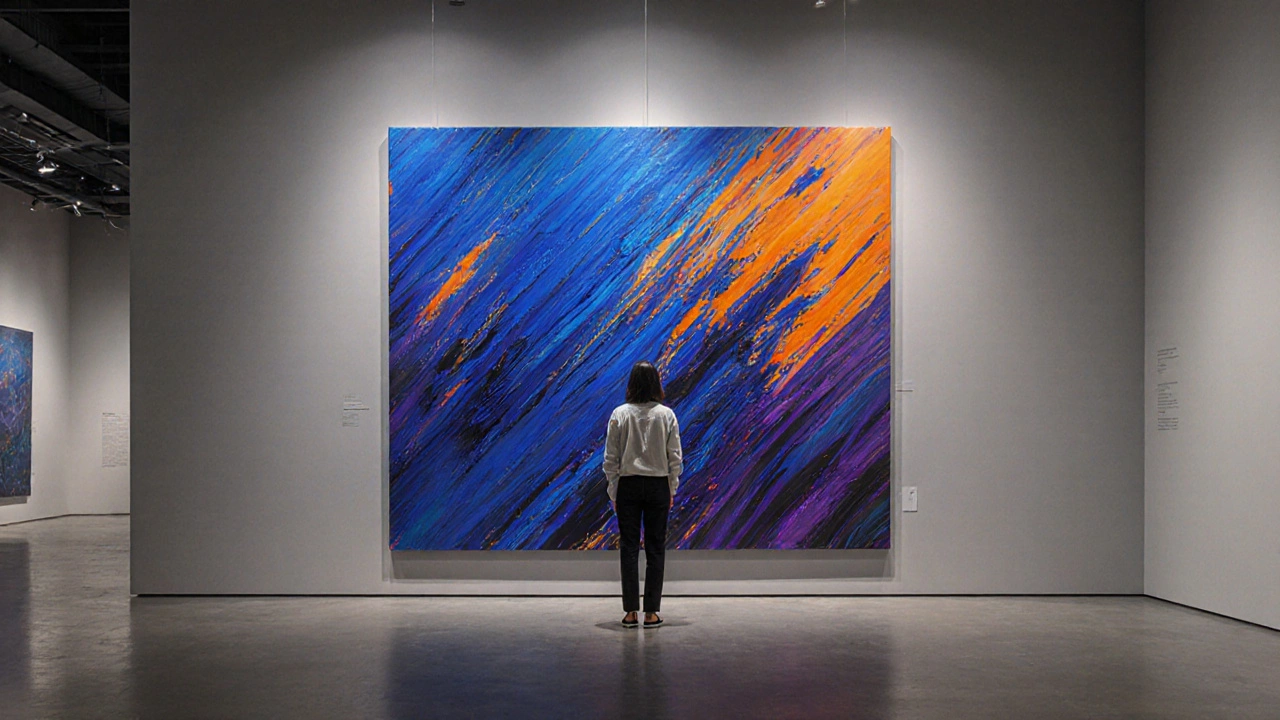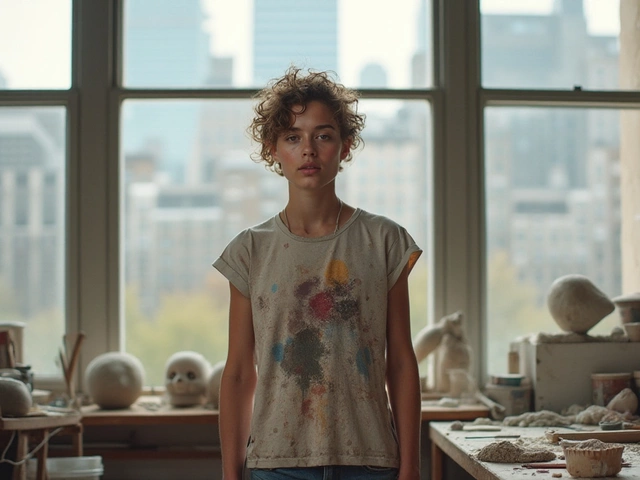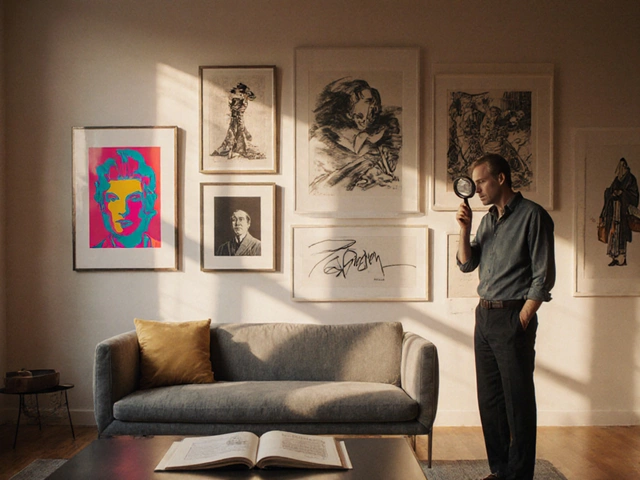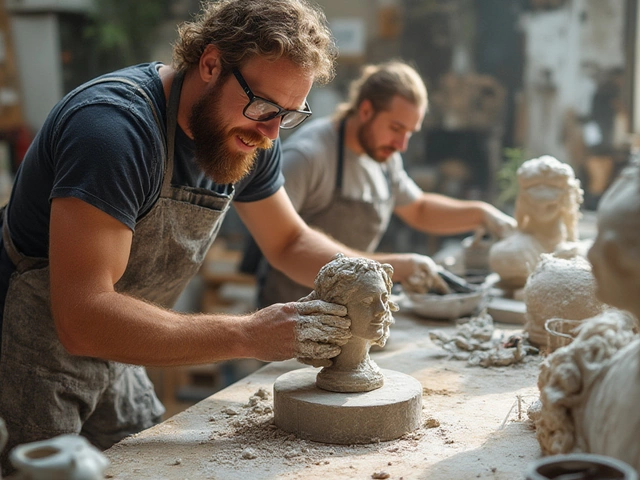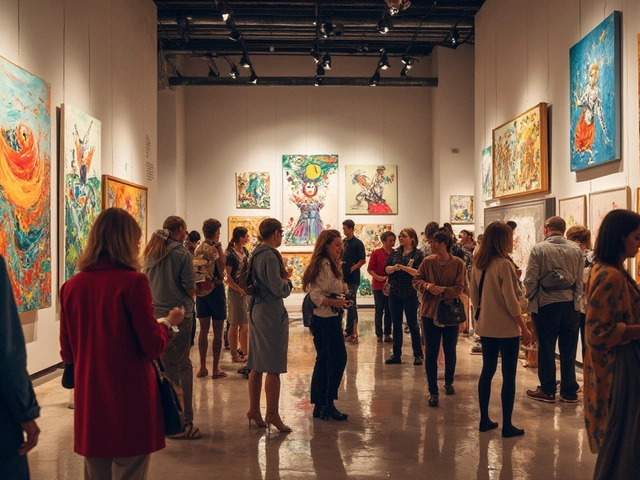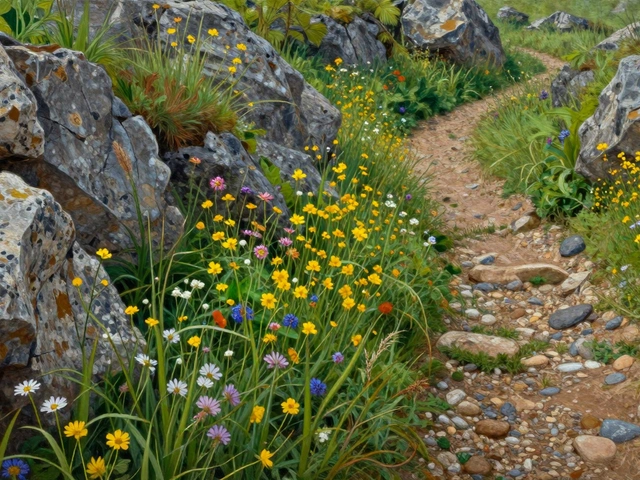When you walk into a gallery and stare at a burst of color that seems to pulse with emotion, you’re witnessing the work of a abstract artist who knows how to turn feeling into form. But what separates the artists who consistently create compelling pieces from those who merely dabble? Below we break down the habits, techniques, and mind‑sets that define a strong abstract practitioner.
Key Takeaways
- Strong abstract artists blend technical mastery with personal narrative.
- They treat color, composition, and material as language.
- Consistent experimentation and reflection keep their work fresh.
- Building a focused portfolio and engaging with the community are essential for visibility.
- A clear artistic statement helps both creators and collectors understand the intent.
Core Traits of a Good Abstract Artist
At the heart of abstract work is the ability to communicate without literal representation. This requires a mix of intuition and disciplined observation. Here are the hallmark traits:
- Curiosity - They constantly ask, “What if I invert this color? What happens when I change the texture?”
- Discipline - Regular studio practice, even when inspiration feels scarce, builds a reliable output.
- Confidence - Trusting the canvas to guide them, rather than over‑planning each brushstroke.
- Critical eye - Ability to step back, critique, and refine without losing the original spark.
- Emotional honesty - Their work often mirrors personal experiences, making the abstract language feel authentic.
Technical Foundations: Color, Composition, and Medium
Even the most instinctual abstract pieces stand on solid technical ground. Mastery of color theory, composition, and material handling turns spontaneous gestures into lasting impact.
Color Theory: Understanding complementary, analogous, and triadic schemes lets an artist create tension or harmony deliberately. A quick experiment-painting a swatch using only the warm side of the color wheel-reveals how temperature influences mood.
Composition: Abstract composition isn’t random; it follows balance, rhythm, and focal points. Think of the canvas as a stage where shapes and lines perform a dance. The rule of thirds still applies, as does the concept of visual weight.
Medium Mastery: Whether working in acrylic, oil, or mixed media, knowing how each pigment interacts, dries, and layers is crucial. Mixed media adds depth-combining collage, ink, and texture paste can create unexpected juxtapositions that keep the eye moving.
Developing a Personal Voice & Concept
Abstract art thrives on individuality. Artists who articulate a clear concept behind their work tend to attract dedicated followers.
- Identify themes: Are you exploring urban decay, natural cycles, or emotional turbulence? Pinpointing a theme gives your abstracts a narrative thread.
- Write an artist statement: A concise artist statement (150‑250 words) explains your motivation, process, and how you hope viewers will feel. This not only guides your own practice but also helps galleries and buyers connect with your work.
- Consistent visual language: Repeating certain motifs-like a specific brushstroke or color palette-creates a recognizable signature without being repetitive.
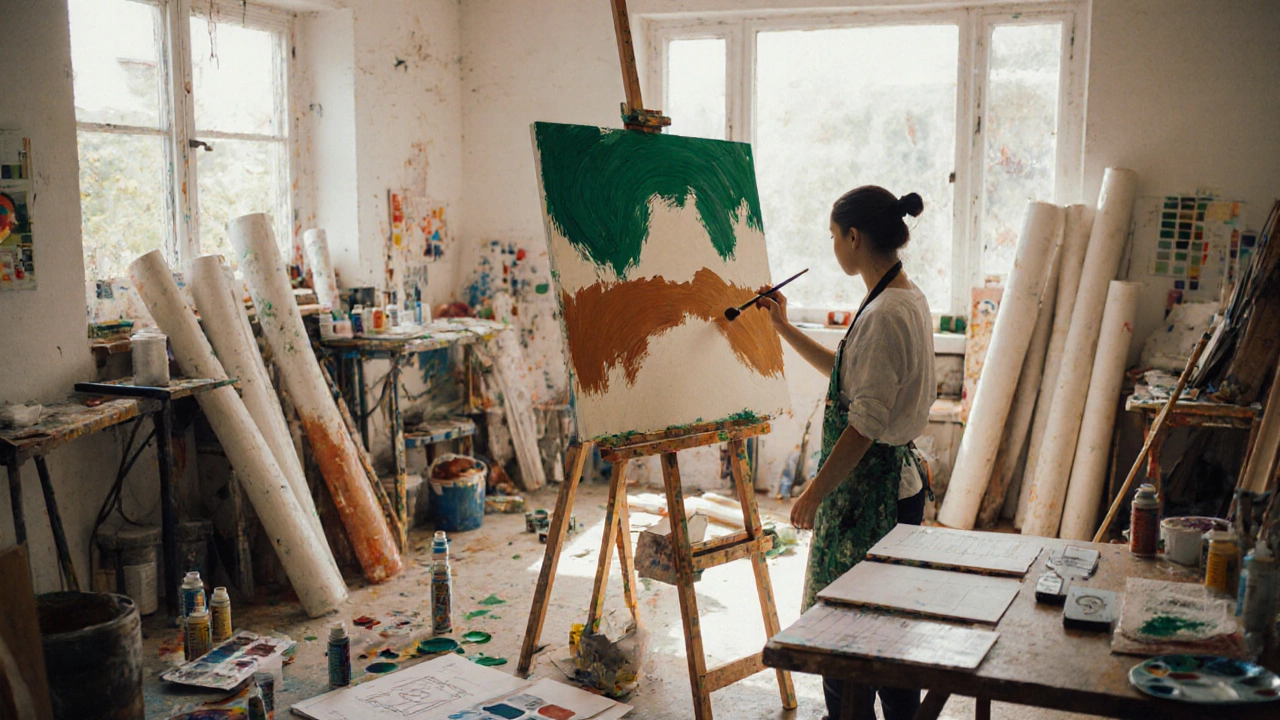
Process & Workflow: Experimentation Meets Reflection
Good abstract artists balance freedom with structure. Below is a practical workflow many use:
- Warm‑up exercises: Spend 10‑15 minutes with no intention other than mark‑making. This loosens the hand and mind.
- Set a constraint: Limit yourself to three colors, a single brush size, or a timed session. Constraints spark creativity.
- Layer and pause: Build the piece in stages, stepping back every few minutes to assess balance.
- Document the process: Photograph each stage. These images become valuable content for social media and help you analyze what works.
- Critique session: After the work dries, compare it to your initial concept. Ask, “Does this convey the feeling I intended?” If not, note adjustments for the next piece.
Building a Portfolio & Showcasing Your Work
A well‑curated portfolio tells a story. Here’s a quick checklist to ensure it works for you:
- Include 10‑15 pieces that demonstrate range and depth.
- Show progression: early experiments, breakthrough works, and recent pieces.
- Provide high‑resolution images with consistent lighting.
- Attach brief captions that hint at concept without over‑explaining.
- Maintain an updated online gallery on platforms like Behance or your own website.
When approaching a gallery, research its recent exhibitions. Tailor your submission to match the space’s aesthetic while highlighting what makes your vision distinct.
Navigating the Art Market & Community
Even the most skilled abstract artists need to understand the business side. Here are practical steps:
- Pricing strategy: Start by calculating material costs, studio time, and a modest profit margin. Then adjust based on market demand and your reputation.
- Network deliberately: Attend local art fairs, join artist collectives, and engage in online forums. Building relationships often leads to exhibition opportunities.
- Leverage social media: Share work‑in‑progress videos, time‑lapse reels, and behind‑the‑scenes stories. Authentic content attracts collectors who value the process.
- Understand the art market: Track recent auction results for abstract works. Knowing where similar pieces sell helps you set realistic expectations.
- Maintain professionalism: Promptly respond to inquiries, ship artworks securely, and provide certificates of authenticity when requested.
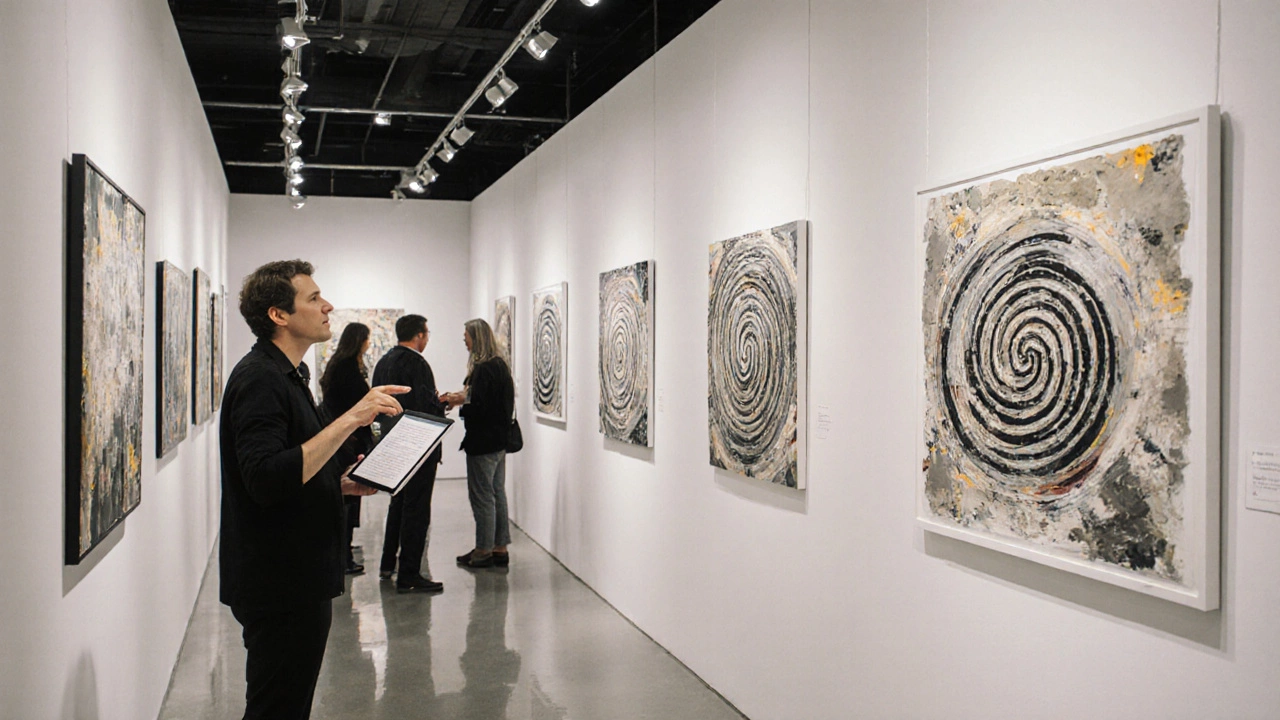
Common Pitfalls & How to Avoid Them
Even seasoned creators slip into habits that hinder growth. Spot these red flags early:
- Over‑reliance on trends: Chasing the latest buzz can dilute your voice. Keep trends as inspiration, not a blueprint.
- Neglecting fundamentals: Skipping color studies or composition basics leads to work that feels random rather than purposeful.
- Inconsistent output: Irregular studio time makes it harder to refine techniques and maintain audience interest.
- Under‑documenting: Without process photos or notes, you lose valuable learning material and marketing content.
- Avoiding critique: Shying away from feedback stalls improvement. Seek constructive criticism from peers or mentors.
Addressing these issues early keeps your artistic journey on an upward trajectory.
Comparison Table: Good vs. Developing Abstract Artists
| Attribute | Good Abstract Artist | Developing Abstract Artist |
|---|---|---|
| Conceptual Clarity | Clear, personal narrative guiding each piece | Vague ideas, often improvised without purpose |
| Technical Mastery | Confident use of color theory, composition, medium | Basic skill set, occasional technical missteps |
| Portfolio Cohesion | Consistent visual language, purposeful selection | Mixed styles, lacking a unifying thread |
| Market Engagement | Active networking, strategic pricing, regular shows | Limited exposure, ad‑hoc sales attempts |
| Process Discipline | Documented workflow, regular critique loops | Irregular practice, minimal self‑review |
Next Steps & Troubleshooting
If you’re just starting, pick one area to improve each month-maybe a color study in June, then a portfolio refresh in July. Track progress in a simple journal; note what works and what feels forced.
Stuck on a piece that feels ‘dead’? Try the "reverse constraint" method: limit yourself to a single hue or a tiny brush. This forces you to explore texture and value, often reigniting the original spark.
Need feedback but lack a community? Online forums like r/AbstractArt on Reddit or local art‑center meetups are great places to share work‑in‑progress and receive honest input.
Frequently Asked Questions
How many pieces should I have in my abstract portfolio?
Aim for 10‑15 strong works that show range, progression, and a cohesive visual language. Quality outweighs quantity for most galleries.
Do I need formal art education to become a good abstract artist?
Formal training helps master fundamentals faster, but many successful abstract artists are self‑taught. Consistent practice, study of color theory, and regular critique are more critical than a degree.
What mediums work best for beginners?
Acrylics are popular because they dry quickly and allow layering without long wait times. Once comfortable, experimenting with oil or mixed‑media adds depth.
How do I price my abstract paintings?
Start by adding material costs, studio time, and a modest profit margin (often 30‑50%). Research similar works at local galleries and adjust based on your emerging reputation.
Can I sell abstract art online without a gallery?
Absolutely. Platforms like Etsy, Saatchi Art, and Instagram Marketplace let you reach collectors directly. Provide high‑quality images, clear shipping policies, and a compelling artist statement to build trust.
